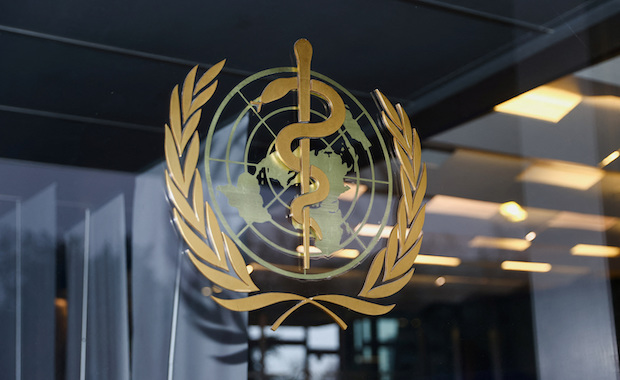
The World Health Organization logo is pictured at the entrance of the WHO building, in Geneva, Switzerland, Dec. 20, 2021. (REUTERS)
LONDON — The number of people in Europe with undiagnosed HIV has risen as testing rates fell during the COVID-19 pandemic, threatening a global goal of ending the disease by 2030, a report said.
The joint World Health Organization (WHO) and European Centre for Disease Prevention and Control (ECDC) report said that in 2021 a quarter fewer HIV diagnoses were recorded compared to pre-pandemic levels in the WHO’s European region.
This region includes Russia and Ukraine, which have the area’s highest rates of HIV infection.
This setback was likely because services related to HIV, including testing, were sidelined in many European countries during the two years of the pandemic, the report found.
“It’s likely that reduced testing and extra demands due to the COVID-19 pandemic on clinical sectors and also on public health institutes did impact case detection in 2020 and 2021 and we do believe that this is still continuing even today,” ECDC HIV expert Anastasia Pharris told a news briefing on Wednesday.
The report used modeling to predict the number of estimated infections and compared that to testing data provided by 46 of the 53 countries in the WHO’s European region.
An estimated one in eight people living with HIV in that region remains undiagnosed, it found.
Disruptions to HIV testing during the pandemic matter because the longer the period of time between HIV infection and diagnosis, the higher the chances of severe illness or death, and the higher the likelihood that individuals unknowingly pass the virus to sexual partners, the report found.
While efforts to tackle HIV, tuberculosis, and malaria began to recover last year after being hit by the COVID-19 pandemic in 2020, the world is still not on track to defeat these diseases, public-private alliance the Global Fund said in September.